
by Deep Green Resistance News Service | May 29, 2018 | Listening to the Land
by Stephany Seay / Buffalo Field Campaign
It’s been a pretty mellow week here with the buffalo. We’ve had very few instances of buffalo along the highway, but there is one big bull who is starting to stretch his legs into some of the newly gained year-round habitat. He has headed north of Fir Ridge, along Highway 191, moving out of the Hebgen Basin further north than we’ve seen a buffalo go in many years. He’s making us a bit nervous, though, as he’s in a tight, forested section and staying close to the road. If he continues north, the land will open up a bit, and if he continues even further north, he could potentially be the first buffalo to make it to the Taylor Fork in over two decades. There are some organizations and agencies who have wanted to capture and transport buffalo to the Taylor Fork, but we keep saying that if they want to be there, they will go. We’re keeping a close eye on this amazing boy who is showing other humans who want to “make” them do things that, if given time and space, they will be the ones to show us the way.
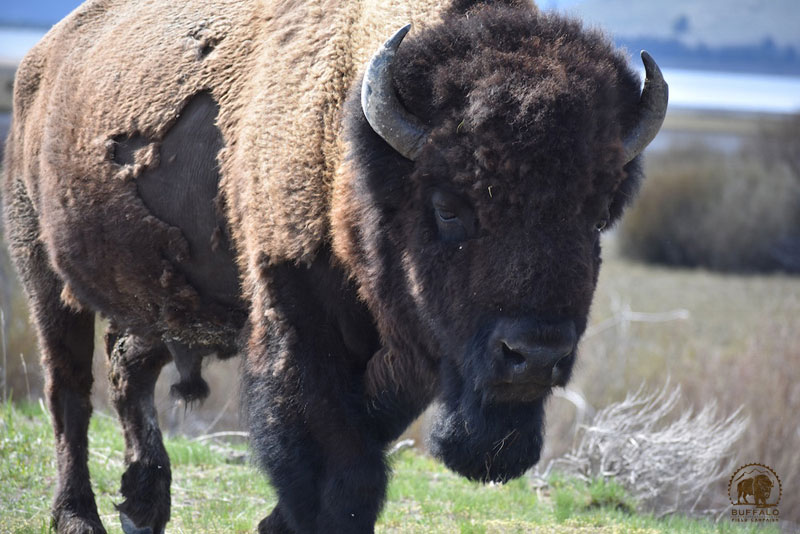
Around the Hebgen Basin, Central herd members continue to bring forth new life. Calving season got off to a bit of a late start, but, now, every day we are seeing more and more calves. Except for a few, short hazing operations and the challenges of the highway, the buffalo are at peace here. Moms can give birth without disturbance, and the calves are able to run, play, and grow strong without the threat of being hazed. While the Central Herd’s numbers are drastically down — our highest count here has been fewer than 250 in this Basin, and less than 100 counted on recons into Yellowstone’s interior — every single calf who is born is a symbol of resistance, an effort to make a comeback from Yellowstone’s senseless slaughter. Each calf is a celebration for the buffalos’ future. And, we want you to celebrate with us. So, instead of a lot of words, here is a little photo journey into wild buffalo calving season!

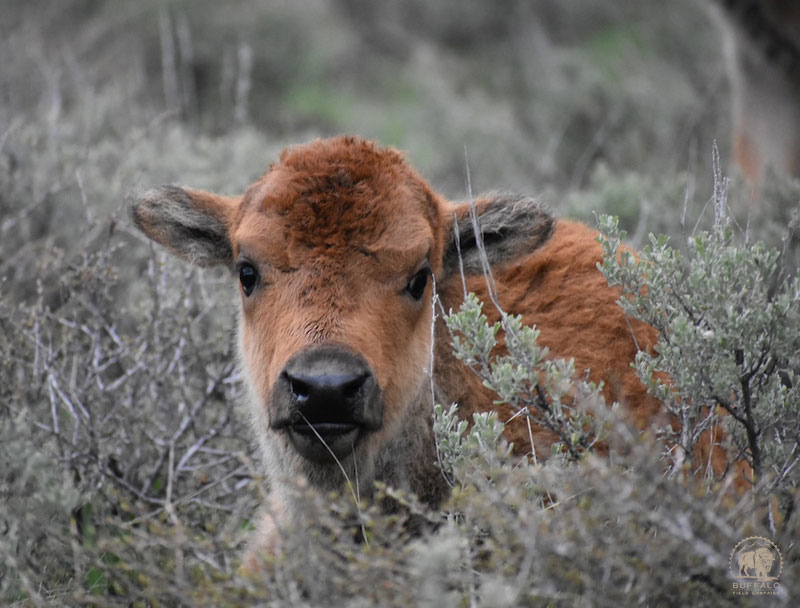
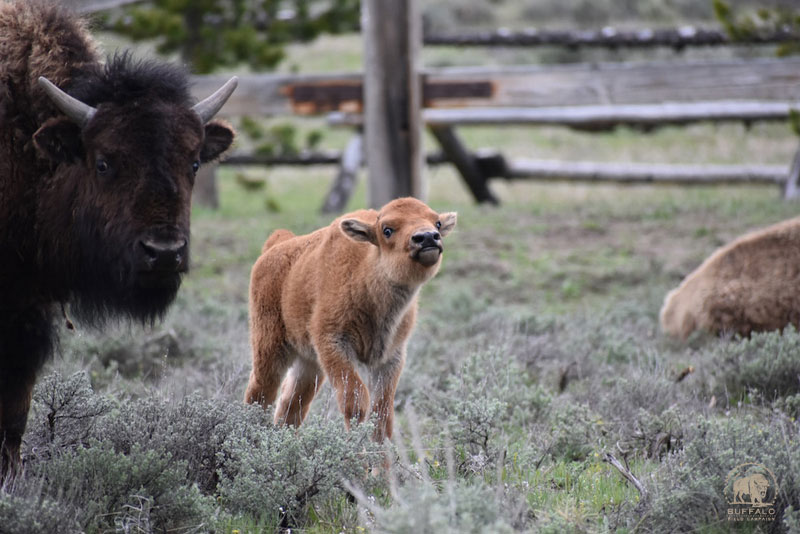
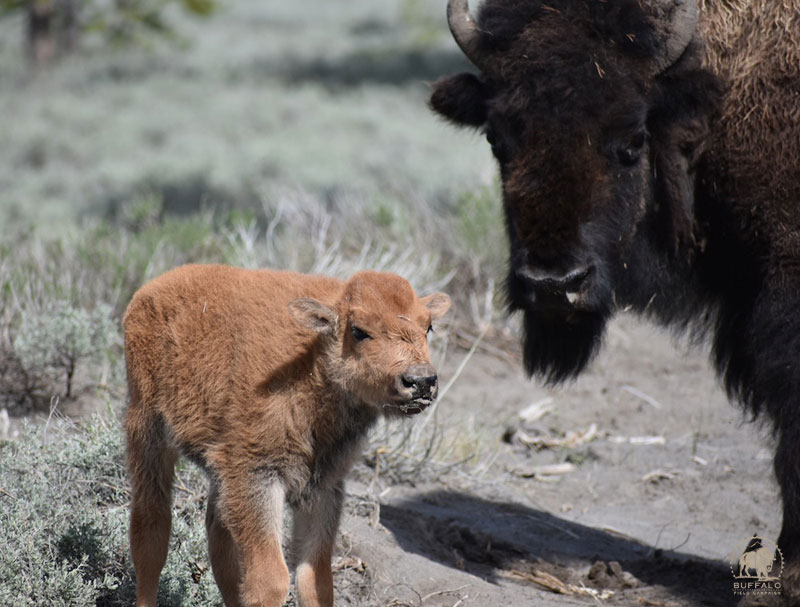
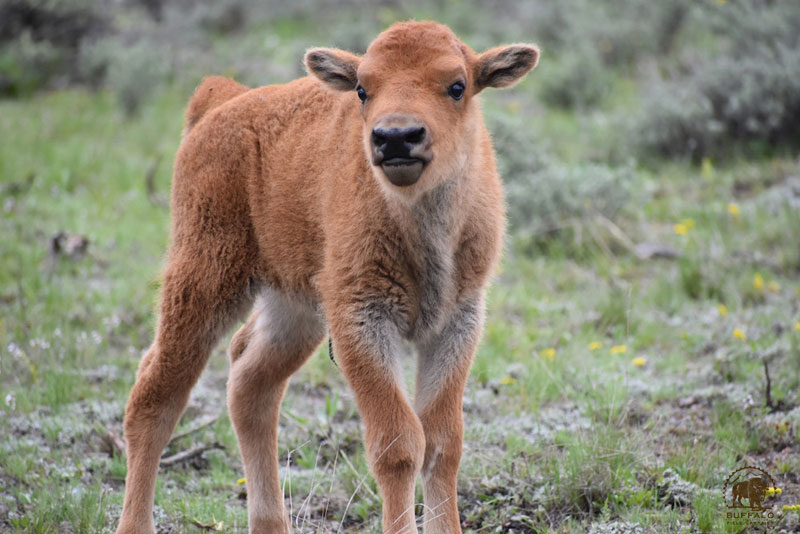

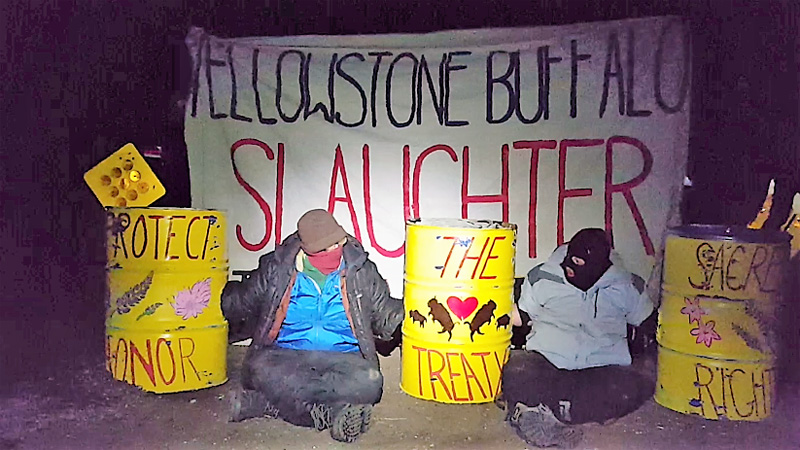
by Deep Green Resistance News Service | Mar 24, 2018 | Biodiversity & Habitat Destruction
Featured image: Coyote and Wolf block the access road to Yellowstone’s Stephens Creek buffalo trap, in an attempt to halt trucks from transporting wild buffalo to slaughter. Photo by Wild Buffalo Defense.
by Stephany Seay / Buffalo Field Campaign
Direct Action
Last Friday, two more people were arrested after attempting to halt Yellowstone from shipping wild buffalo to slaughter. The two men, Coyote and Wolf, with the direct action collective Wild Buffalo Defense, locked down to three concrete-filled barrels in front of the gate to the access road that leads to the trap. They were released from jail on Monday. Their brave act stalled operations for four hours.
Despite these courageous actions along with overwhelming public opposition to the slaughter, Yellowstone continues to kill buffalo. That morning, Yellowstone officials were so determined to send buffalo to slaughter — the very gentle giants the country has entrusted with their care — that they destroyed sensitive habitat to create a road around the blockade so that the trucks could get through.
This begs the question: whom does Yellowstone serve? Certainly not the global public, including Montanans, who are largely opposed to the slaughter of the last wild buffalo. Yellowstone presses on with urgency, capturing and killing as many buffalo as they can so they can make the cattle lobby of Montana happy. Yellowstone betrays Native buffalo cultures, the general public, their mission, the Organic Act, and, most importantly, the buffalo. Not even in Yellowstone National Park is our national mammal safe.

An adult female buffalo held captive inside Yellowstone’s trap. She’s imprisoned in a small, dung-filled sorting pen until such time as trucks and trailers arrive to send her and her friends to slaughter. Photo by Stephany Seay, Buffalo Field Campaign.
Perhaps in response to the embarrassment they feel from doing what they know is wrong, and to having their “government operations” interrupted again, Yellowstone treated the two men very aggressively and made shocking statements in defense of the slaughter, telling the protectors, “these buffalo are going to die and there’s nothing you can do to stop it!”
Yellowstone Captures More Buffalo, Far Exceeds Kill Quota
Yellowstone has further retaliated by capturing more buffalo, bringing the total captured to nearly 800 individuals. Even though it’s just a few weeks away from calving season, they still may not be done. Many of these buffalo are from the imperiled Central herd, who even Yellowstone admits are in dire straights. The buffalo managers (read: manglers) that entered this winter with a goal of killing between 600-900 buffalo have far exceeded this quota.
Given the number of buffalo captured for slaughter and quarantine, along with the excessive hunting that took place along Yellowstone’s boundary, more than 1,200 buffalo have been eliminated from the country’s last wild, migratory buffalo populations, which now hovers at fewer than 3,600. That doesn’t even include natural winter mortality, which can also take a heavy toll.
It is unknown how many remain in the Central herd, who numbered a shocking 847 before this killing season began. Over 100 were killed by hunters in the Hebgen Basin, and aside from a few radio-collared females, none of the bison managers know how many of the buffalo killed in the Gardiner Basin were from this highly endangered population. Yellowstone is acting in foolish haste to appease Montana’s livestock industry, making excuses not backed by science, ecology, or public sentiment to wantonly destroy this sacred, keystone species, who is a national treasure and the last of their kind.
Yellowstone’s buffalo slaughter continues to be challenged from every direction, and pressure on them is increasing and will continue to do so until they quit being puppets for Montana cowboys.

There is hope in the coming of the calves. Photo by Stephany Seay, Buffalo Field Campaign.
Hunting Has Ended
Hunting seasons have finally ended, so some buffalo are enjoying a respite. Of the buffalo who do roam free, BFC Gardiner patrols report that fewer and fewer are in the Gardiner Basin. Spring is here, and calving season will be underway in just a few weeks. Buffalo are starting to move to their calving grounds; Northern herd buffalo are heading up towards the Blacktail Plateau, while the surviving Central herd buffalo are slowly beginning to move into the Hebgen Basin.
There is hope in the coming of the calves. Grizzly bears are also waking up. Patrols cut fresh tracks of a young grizzly the other morning, and there has been another sighting around Horse Butte, and a couple inside the park. These bears are hungry and are looking for winter-killed buffalo meat — an extremely important food source for them after emerging from their long winter’s nap. We hope they will find enough food to eat, given that Yellowstone has stolen so much of it from them.
Patrols in the Hebgen Basin are making ready to serve as buffalo crossing guards, helping to warn traffic as buffalo migrate to their calving grounds. These rove patrols have saved many lives, both human and buffalo. Our night roves are particularly important, as that’s when buffalo tend to get struck by vehicles, because they are so difficult to see at night.
Patrols are also keeping a close eye south of the Madison River, where buffalo were not granted year-round habitat, and are therefore threatened by hazing operations conducted by the Montana Department of Livestock. But, thanks to the incredible victory of gaining wild buffalo year-round habitat on Horse Butte and lands north, we are also very much looking forward to the days we can just be on the land with the buffalo, watching the new calves arrive, spending time in their peaceful presence, listening to their stories.
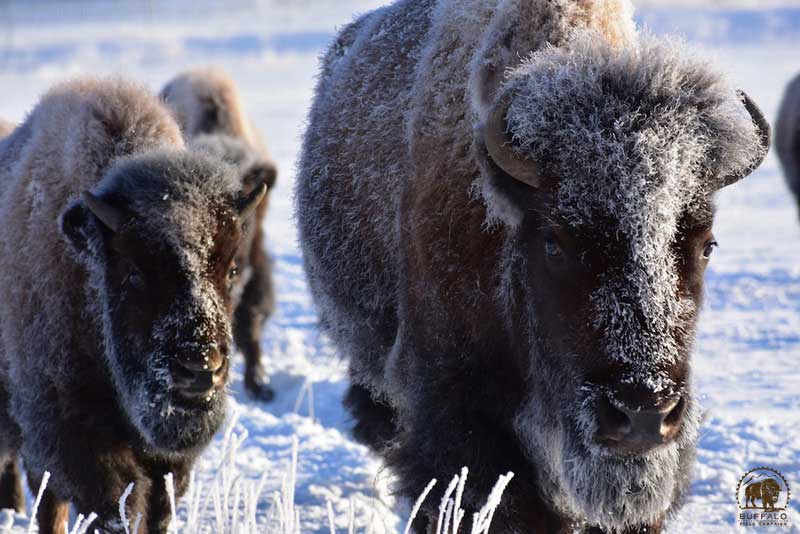
by Deep Green Resistance News Service | Mar 1, 2018 | Biodiversity & Habitat Destruction
Featured image: A single mom with seven calves who she is caring for. More than likely, only one of these calves are hers, and the rest of these babies are buffalo she adopted after their mothers were killed by hunters. BFC photo by Stephany Seay.
by Stephanie Seay / Buffalo Field Campaign
It’s just below zero as we trek through freshly fallen snow on an unusually windless early morning, in the high hills above the Gardiner Basin. Taking advantage of the calm air that won’t rock our scopes and cameras, our patrol is on the way to a lookout spot high above Yellowstone’s Stephens Creek buffalo trap. The trap is miles away. The spot we’re at is one of the few places that we can see even a far-away glimpse into the industrial size monstrosity that has entrapped more than 450 of the gentle giants in the past couple of weeks. Yellowstone initiates a massive seven-mile public closure around their trap, obviously wanting to hide the horrible things they are doing to this sacred species, our national mammal. On our way to the lookout, our footsteps squeaking through the freezing cold snow, one of our crew shouts out, “wolves!” We all stop dead in our tracks. To the south of us, we can hear them, the beautiful, haunting serenade of a wolf pack, singing blessing songs to the morning, or, more like mourning songs to the travesty unfolding before us. The wolves know. We get to the lookout spot and it’s as bad as we thought: hundreds of buffalo in the trap, huddled together, eating hay rations, trapped on death row. Four park wranglers on horseback, and a white SUV are coming into the northernmost paddock of the trap which holds approximately 60 of the country’s last wild buffalo. This paddock is the veritable end of the line before the buffalo go in even deeper, to places they will never return from.
“Genocide,” our Blackfeet brother says. We nod in agreement. The U.S. Government continues the systematic destruction of the sacred buffalo, and for the same reasons, too. Only, these days, instead of Buffalo Bill and Wild Bill Cody, they call it “management” and the killers are the so-called guys in green: Yellowstone National Park. Donning buffalo on their uniform badges, they are the very ones who are obligated to protect the buffalo — the buffalo who are the main reason this park even exists, that people even come here. These “caretakers” are facilitating all of the trapping and most of the killing. As we watch through our scopes and binoculars, eyes teary from the blistering cold, or the pain in our hearts, the wranglers go in for the attack. It’s just another day in the park. Frantic, the sixty buffalo run away from the wranglers, but the only path open to them is the dark corridor that leads into the labyrinth of the trap, towards the bull pen and the squeeze chute, towards the end of freedom and family, into the tiny holding pens where they will spend their last hours in feces and fear, before being loaded onto livestock trailers headed for the slaughter house. The mournful howling continues. The wolves know. We join in.
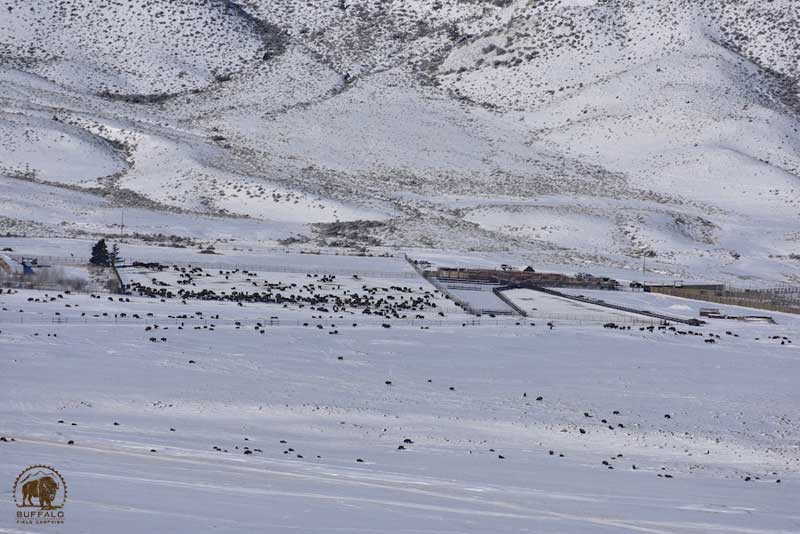
A bird’s-eye view of Yellowstone’s Stephens Creek buffalo trap. The massive closure is an attempt to keep the public from seeing what Yellowstone is doing. BFC photo by Stephany Seay.
Anticipating shipments to slaughter, the next morning we rise even earlier to get our sites on the trap before the trailers arrive. We are well ahead of schedule. Our presence, our vigilance is the only way for anyone to know what is taking place here, for anyone to know what is really happening to the buffalo. Once posted up, we send one patrol high into the hills for an even better birds-eye view. Even so, both lookouts rely on the powerful magnification of spotting scopes to see anything, and tiny-dot-anythings at that. With the naked eye, the trap and it’s happenings are hardly visible at all. The trap is so strategically located that Yellowstone’s shame and desire for secrecy are apparent. Just before dawn, multiple vehicles start arriving to the trap. The unmarked rigs of the wranglers, a few park service law enforcement officers, Yellowstone’s bison biologist, Rick Wallen, and others, get ready for another day of wild buffalo abuse. Then the stock trailers show up, flanked by law enforcement escorts. It takes less than an hour for them turn wild buffalo from sacred, free-born beings into “pounds on the hoof” headed for the slaughter house.
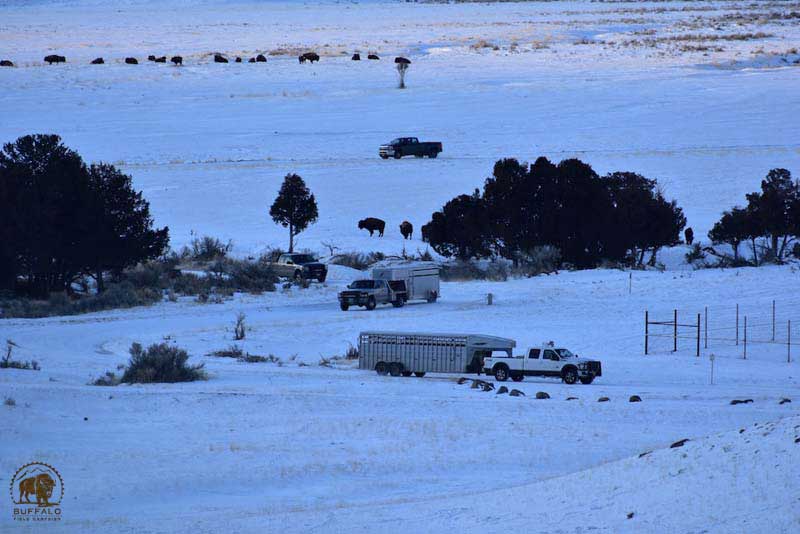
2018 03 01 03 003 Update3 Buffalo Field Campaign Stephany Seay 2018 800 Two stock trailers drive through Yellowstone, and groups of buffalo, taking buffalo who were captured at Yellowstone’s facility to slaughter on Wednesday morning. BFC photo by Stephany Seay.
The dominant culture — not even those who might care — can’t bear to look into the face of the reality of its actions. It views the human supreme; born out of a cold arrogance lusting for control, enabling the conversion of the living into the dead for profit. Forgetfulness, mindlessness – “with guns and laws and truth that lies” – help grease the gears of the machine; numbness is the key to conducting wildlife “management.” It is said that once you see, you cannot unsee. A self-inflicted blindness enables it —to see would break their hearts and force their souls wide open. So, with brutal efficiency, the government workers keep their blinders on, do their jobs, and hold fast to the agreed upon Interagency Bison Management Plan.
Approximately 450 wild buffalo have been captured in Yellowstone’s trap, and nearly 250 have been killed by hunters just across Yellowstone’s boundary. By Yellowstone and Montana’s own standards, the middle-end of their 600-900 kill quota — in place to appease Montana’s cattle interests — has already been met. After the last few weeks of extremely unsavory ‘hunting’ along Yellowstone’s north boundary, very few hunters have come to kill buffalo this week. Many have left here utterly disgusted, vowing never to participate in such a slaughter again.
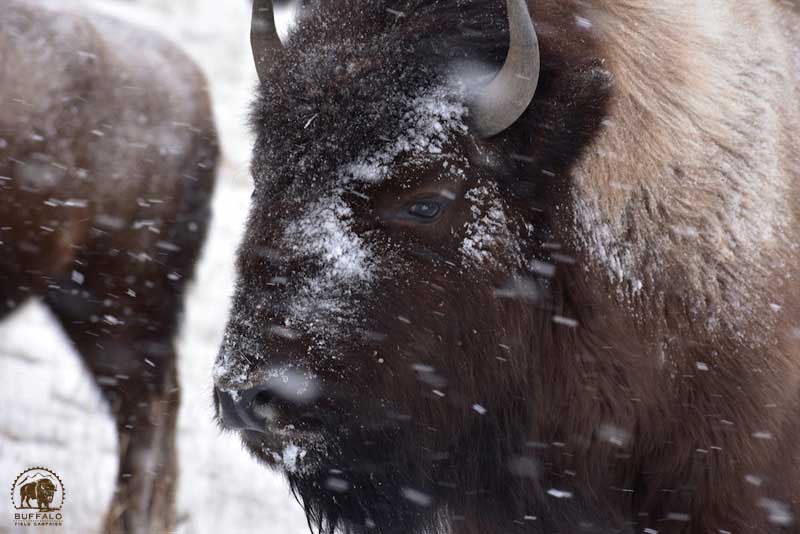
With their enormous, shaggy heads, buffalo face into a storm. We have much to learn from our relatives, the buffalo. BFC photo by Stephany Seay.
Before and after bearing witness to this insanity, we are reminded of the real reason we are here. Other buffalo, who were not in the trap, gave us the gift of remembering and connection, the honor of being in their presence and living in the moment. They help us remember who we are fighting for — and with — and why. The buffalo help us connect with their humbling ancient wisdom; a truth so incredibly sacred because of its gentle simplicity and rightness.
The blizzard came in quick and heavy, and the buffalo moved right along with it as they always do. With their heads into the storm, grazing and walking, sparing and goofing around, they look up at us for moments with the eyes of god, the faces of ghosts, awakening memories of ages past and future potentials. Still here. Still present. Still doing what they have always done since buffalo time began. Where they walk, ravens feast on the gut piles of their recently killed relatives, strewn across the landscape at Beattie Gulch, a beautiful place that has become synonymous with death. And, yet, the buffalo still come, still offer life, staying among the living. Obstacles be damned. These ancient beings have survived Ice Ages; now the question is: can they survive the U.S. government? In the joy of sharing time and place with the buffalo, in our pain and anger fueled by management plans, being in the company of friends both human and buffalo recognizing each other, committing to each other again; in our solidarity among our comrades we understand that all of these things come from love. Profound love. The buffalo and their wildness, their teachings of sorrow and joy, their obligation to the earth, and ours to them. These realities keep awake our spirits, reaffirm and strengthen our vow: yes, you will survive, and we will give ourselves to make sure of it; fighting for you, along side you.
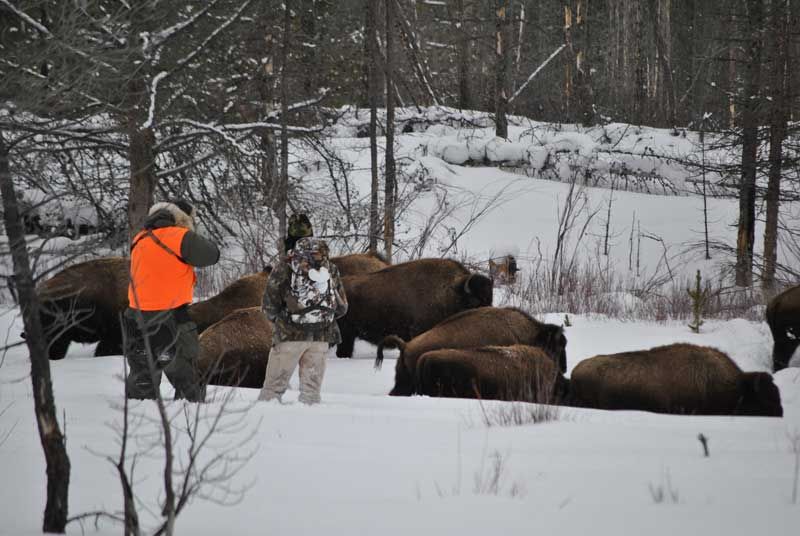
by Deep Green Resistance News Service | Feb 12, 2018 | Biodiversity & Habitat Destruction
by Max Wilbert / Deep Green Resistance
This morning, I spent four hours lost in an industrial neighborhood in Pocatello, Idaho. I was carrying two bags and a box full of food—altogether about 70 or 80 pounds—the wind was howling through the flat grey morning, and I must have covered five miles before I found the coffee shop that I’m sitting in right now.
Explaining why I am here requires that we go back almost 200 years. By the mid-1800’s, the U.S. empire was growing rapidly and expanding west. As guns and horses spread across the Great Plains, bison herds began to fall to hunters and settler-colonists in need of hides. At the same time, industrialism was expanding. Factories used buffalo leather straps as a strong yet elastic material to drive belts on their machines, which means that the bison were literally killed to drive machines.
By the year 1902, there were only 23 bison alive on this continent who took refuge in Pelican Valley in what is now Yellowstone National Park. This means that between 30 and 60 million had been killed in less than 100 years, most of them in less than 20 years. That’s a survival rate of less than one in ten million, or 0.0000007 percent.
The removal of the bison allowed cattle ranching to expand and allowed the U.S. army to force the powerful plains nations onto reservations. The removal of the native nations to reservations via a series of concentration camps allowed settlers to move in.
Over time, with the establishment of Yellowstone National Park and surrounding wilderness areas, the last 23 bison were able to expand their populations. Today, there are around 4,700 bison in the Yellowstone area who are direct descendants of those final 23 survivors.
At this point, you might be forgiven for thinking that as a society, we’ve learned better, and now we protect wild buffalo—especially within Yellowstone. The reality is the opposite. Over the past 33 years, government agencies including the National Parks Service and U.S. Fish and Wildlife Service have used our tax dollars to kill more than 10,000 wild bison in and around Yellowstone. In service of livestock interests, Yellowstone National Park has, in the words of my friend Stephany Seay, “more wild buffalo blood on their hands than anyone since the 19th century.”
Today the U.S. Government continues its 200-year-old war against the bison by herding, baiting, and hazing them into a trap located on the North Side of Yellowstone National Park. Here, they are kept for months, subjected to invasive medical procedures (including sterilization experiments), and then murdered. In the past few months, 169 bison have been killed (and counting).
The justification for this slaughter is misguided “management plans” which are heavily influenced—written, more or less—by the ranching industry lobbyists. As was true in the 1800’s, cattle reign supreme in Montana today, and bison pay the price. Idaho is the same. They have a “zero tolerance policy,” which means that any buffalo who enter Idaho are tracked down and killed.
Just so we’re clear, this slaughter is preventing the Yellowstone bison herds from naturally expanding their population into suitable habitat in adjacent National Forests. There is enough land and food and water for the bison, but the cattle barons want all of it
I’ve written and said many times before that we’re living in a war, and that the dominant culture (capitalism, industrialism, civilization, whatever you want to call it) is destroying the planet.
Most people in this culture don’t acknowledge this war, and as the saying goes, “silence is complicity.” Once you understand this war, continuing to stand aside is a betrayal to the planet. There are, however, thousands of people around the world who do acknowledge that this is a brutal war, and that we need to fight back.
These people include the organizers of Buffalo Field Campaign. Buffalo Field Campaign is a grassroots campaign that was founded by Lakota activist Rosalie Little Thunder and activist videography Mike Maese in the winter of 1996-7, when more than a thousand bison were slaughtered by the National Parks Service and Montana Department of Livestock.
Over the intervening 21 years, Buffalo Field Campaign has worked through advocacy, whistleblowing, lawsuits, and direct action to protect the last remaining wild bison in Yellowstone.
I’m on my way right now to Yellowstone. I don’t have a car to travel with, so I rented a one-way vehicle to Pocatello, where another group of friends will pick me up. There are seven or eight of us converging on Yellowstone to express our solidarity, bring donations and supplies, and join in the fight to protect bison.
I’ve often heard the saying that the life of a soldier is 99 percent waiting, and one percent overwhelming terror. In my experience, the life of a revolutionary organizer in the modern world is much the same. We need to prepare, write, organize, build our groups and political consciousness, and gain more resistance skills. Much of this work is boring, dangerous, or downright exhausting.
This morning, after driving through the day yesterday and sleeping on a friend’s grandmother’s couch (thanks for the bag lunch, Lois!), I woke up before 6, jumped in the car, and drove the middle leg of my trip. After dropping the rental car in a tiny, dingy office in the middle of an industrial park covered in trash and tumbleweeds, I had two options: sit awkwardly in the corner for a few hours, or shoulder all my bags, zip up my down jacket, grab my food box, and push open the squealing front door, and try to find my ways sans-GPS to a coffeeshop to get some writing done.
That’s why I was lost on the streets of Pocatello, Idaho this morning.
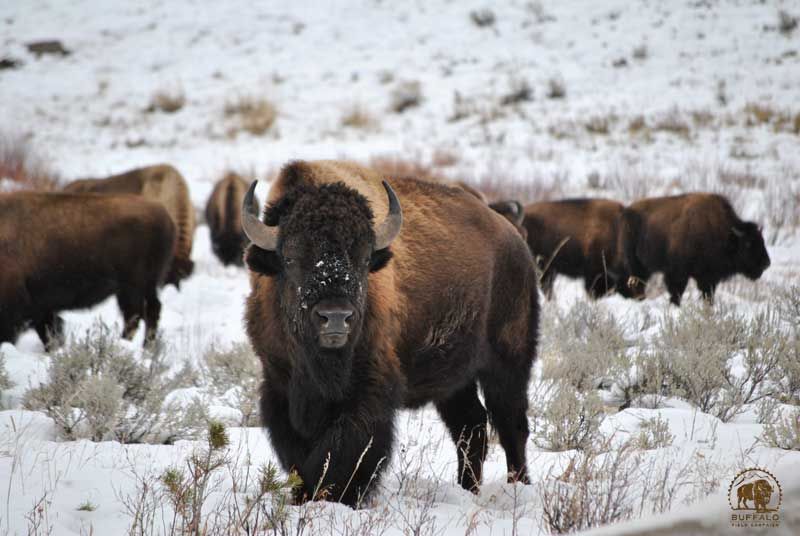
by Deep Green Resistance News Service | Nov 30, 2017 | Biodiversity & Habitat Destruction
Current Management Practices Diminish Herd Viability to the Point of Hunt Closure Recommendations
by Buffalo Field Campaign
WEST YELLOWSTONE, MONTANA: Montana and Yellowstone’s severe mismanagement of wild, migratory bison has caused a serious decline in Yellowstone’s Central bison herd. The current management practices have diminished herd viability to the point that bison biologists are recommending hunt closures in Montana’s Hebgen Basin, west of Yellowstone National Park, lands where only buffalo from the Central Herd migrate to.
So far, this recommendation is not being heeded. Bison from the imperiled Central herd are already being killed by hunters.
The burden should not be on hunters alone. Yellowstone National Park must also take responsibility for their actions and refuse to kill for Montana cattle interests. Yellowstone’s unnecessary capture-for-slaughter operations far exceed the number of buffalo killed by hunters.
The Montana-based wild bison advocacy group, Buffalo Field Campaign, will hand deliver a letter to the Interagency Bison Management Plan (IBMP) decision-makers at an IBMP meeting held today in Chico Hot Springs, Montana. The letter urges hunt managers and Yellowstone to both take the necessary steps that will allow the Central bison herd to recover. The letter will also be sent to Montana Governor Steve Bullock as well as the Tribal Councils and Tribal Fish & Wildlife Commissions of the five Tribes hunting under treaty right.
“If Yellowstone moves forward with capture-for-slaughter operations, they will be neglecting their responsibility to the buffalo, ignoring the tragic shift that they recognize and have directly caused, and will be placing the bulk of the conservation burden on the five Tribes hunting under treaty right,” said James Holt, Buffalo Field Campaign Board Member from the Nez Perce (Nimiipuu) Tribe.
Bison managers know Central herd buffalo migrate west into the Hebgen Basin and also north into the Gardiner Basin. These distinct migrations doubly expose and impact the Central herd to capture and slaughter, hazing, and hunting firing lines on Yellowstone’s border.. The Central herd is in dire straits, hovering now at around 830 individuals, one-fourth the size it was in 2005. Barring a few radio-collared females, slaughter managers can’t differentiate Central from Northern herd buffalo.
“The Central herd is in this predicament because of Montana’s and Yellowstone’s gross negligence, and now Yellowstone biologists are calling for a hunt closure to offer a respite to Central herd buffalo, yet still want to kill up to 1,250 buffalo this winter – from both the Central and Northern herds – as they migrate north into the Gardiner Basin,” said Buffalo Field Campaign Board President Mike Mease. “While a hunt closure on the west side is badly needed, Yellowstone needs to do their part and stand up to Montana and refuse to capture. It is irresponsible and negligent for them to recommend hunting cease while they carry on with indiscriminate slaughter.”
The Central herd needs to recover before they disappear completely.
“The reality is Montana’s and Yellowstone’s “management” is causing a fundamentally tragic shift in buffalo behavior, migrations, and population structure,” said Buffalo Field Campaign media coordinator Stephany Seay. “Without additional habitat and protections, the Central herd will soon be gone, and the entirety of this last wild population is at risk of extinction.”
For more information about what is happening to America’s last wild buffalo, our National Mammal, visit www.BuffaloFieldCampaign.org.

















